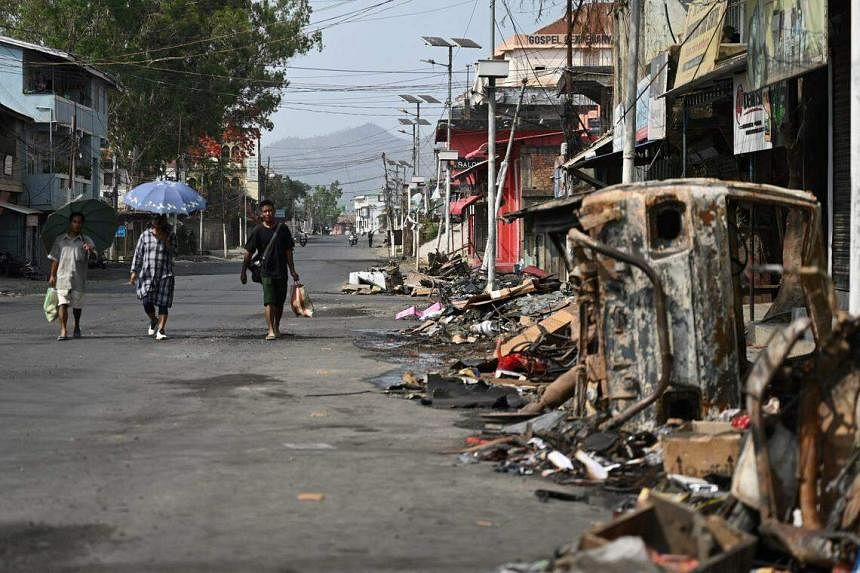Global Courant 2023-05-11 19:00:00
NEW DELHI – Residents of the northeastern Indian state of Manipur are beginning to pick up the pieces after the worst ethnic violence in recent decades, which left more than 60 dead and displaced as many as 35,000 people.
Thousands evacuated after clashes broke out between the majority of the Meiteis and the Kuki hill tribe on May 3, are slowly returning home under security escort. With no new reports of violence, a curfew has also been eased in most of the state, allowing locals to buy supplies from markets.
Still, the road to normalcy in Manipur is a long one, as mutual mistrust remains prevalent, forcing many to stay away from their homes for fear of a resurgence of fighting.
The airport in Imphal, the capital of Manipur, has become a temporary home for about a hundred people waiting for a flight. Among them is 34-year-old Florence Chingboo, a Kuki government employee in the Imphal Valley. While waiting at the airport with her son, who is yet to turn three, her husband and their parents, she told online publication The Print that they “don’t want to take any chances”.
Experts say Prime Minister Narendra Modi’s Bharatiya Janata Party (BJP), which rules the state, now faces the daunting task of rebuilding trust between the ethnic groups and restoring long-term stability in a region that has become a border of 398 km shares with Myanmar. on the front lines of India’s strategic engagement in South East Asia.
Violence erupted last week after the Kuki tribe and other mountain communities held a rally to protest the Meitei’s demand for “Scheduled Tribe” status. This would give the Meiteis benefits that the hill tribes enjoy under this status, including reserved quotas for government jobs and university admissions. Such a classification for the Meiteis would also allow them to own land in their hills.
The Meitei community, which makes up 53 percent of the state’s population of 3.2 million, is largely confined to the valley districts that make up about 10 percent of Manipur’s area. Less than 40 percent of Manipur’s population lives in the hilly terrain that covers 90 percent of the state.
Non-tribals, including the Meitei, cannot purchase and own land in the hill regions, a measure aimed at protecting marginalized tribal communities. There is no such restriction for tribes purchasing land in the valley.
This grouse, along with the valley’s rising population and inadequate economic opportunities, are driving the Meitei’s demand for Scheduled Tribe status.
The Kukis and other hill tribes worry that the Meiteis, who have more influence politically and economically, could gain more control over their ancestral forest land and its resources.
Such concerns have been exacerbated by recent government moves to force hill tribes out of protected forest areas, along with a campaign to end the illegal poppy cultivation that poor mountain villagers resort to for extra income.
Added to this powerful mix are allegations of illegal immigration from Myanmar. Manipur Prime Minister N. Biren Singh claimed in May that immigrants from Myanmar are responsible for deforestation, poppy cultivation and a drug threat in the state.
Myanmar refugees belong to the same ethnic group as the Kuki and other hill tribes in the region. Widespread attacks targeted all Kukis as “immigrants” and “foreigners”, heightening tensions.




